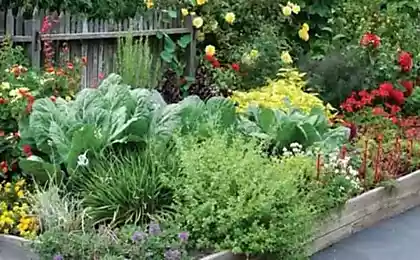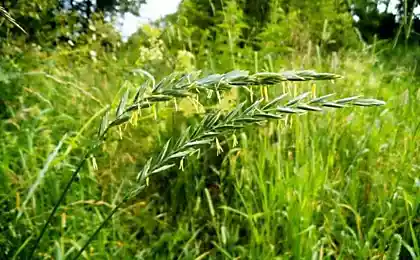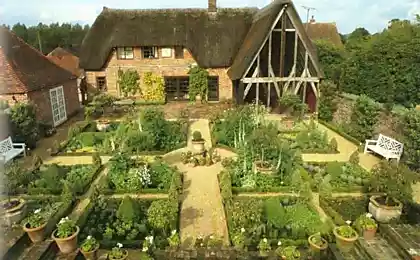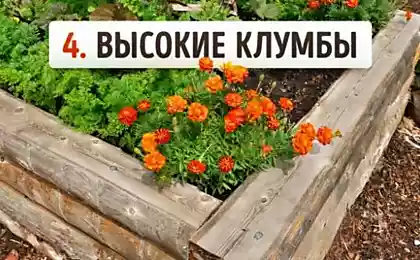150
Grandma's way to tie peas vertically, if the beds are miraculously good
A true gardener knows that after completing the hassle in the garden in winter, it is time not to rest, but to check the lunar sowing calendar for the year of the Bull and prepare for spring planting works. In particular, think about how best to tie peas this year.

There are many ways to tie peas. One of the most popular of them is the construction of a horizontal support of threads and two pegs, on which these threads are attached from different sides. As the peas grow, the threads tie higher and higher.

Undoubtedly, such a support for peas performs its main function well. Weaves of plantations firmly cling to the threads and allow them to grow well. However, as for harvesting, with this method of growing peas, it is extremely difficult to collect fully mature legumes.
So the best option would be to make a trellis separating thick peas. We will talk about how to do this in today’s article.
The first version of the structure consists of a three-meter tapestry grid and a wooden frame on which it is actually attached. You can attach the grid to the frame using the same synthetic cord or ordinary string.

The principle of its operation is as follows. The design divides 2 rows of peas and when plantations grow, they begin to cling to the net. There is a possibility that at the very beginning the sprouts will need to help catch. But after tracking this moment, you can forget about all the troubles and calmly wait for the harvest.

The second version of the trellis is a wood structure resembling the shape of a wigwam. It's pretty simple, too. Pointed on one side of the sticks (preferably the same length) are placed on the bed so that their upper parts cross.

Such a simple structure can be made of willow or large branches of old raspberries. Unnecessary plywood can also be used. However, the material that makes up the structure is not so important. It is more important to install it correctly.
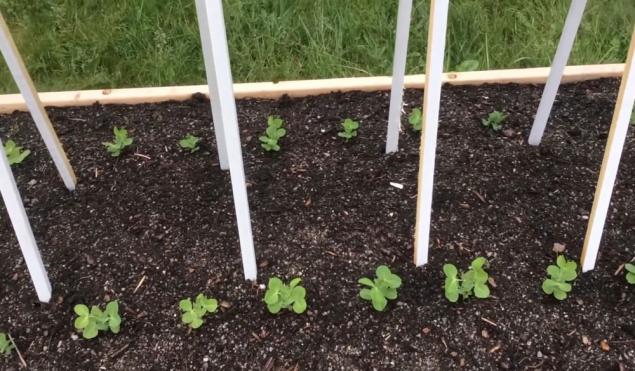
Above, the photo shows that each peg is located between two pea sprouts. And this distance is the most optimal solution for its cultivation.
You can learn more about how each of the proposed supports works from the video by Tatiana Nikonova.
https://www.youtube.com/watch? v=TkDtS42Cwlc
We say good-bye and wish you a wonderful day.

There are many ways to tie peas. One of the most popular of them is the construction of a horizontal support of threads and two pegs, on which these threads are attached from different sides. As the peas grow, the threads tie higher and higher.

Undoubtedly, such a support for peas performs its main function well. Weaves of plantations firmly cling to the threads and allow them to grow well. However, as for harvesting, with this method of growing peas, it is extremely difficult to collect fully mature legumes.
So the best option would be to make a trellis separating thick peas. We will talk about how to do this in today’s article.
The first version of the structure consists of a three-meter tapestry grid and a wooden frame on which it is actually attached. You can attach the grid to the frame using the same synthetic cord or ordinary string.

The principle of its operation is as follows. The design divides 2 rows of peas and when plantations grow, they begin to cling to the net. There is a possibility that at the very beginning the sprouts will need to help catch. But after tracking this moment, you can forget about all the troubles and calmly wait for the harvest.

The second version of the trellis is a wood structure resembling the shape of a wigwam. It's pretty simple, too. Pointed on one side of the sticks (preferably the same length) are placed on the bed so that their upper parts cross.

Such a simple structure can be made of willow or large branches of old raspberries. Unnecessary plywood can also be used. However, the material that makes up the structure is not so important. It is more important to install it correctly.

Above, the photo shows that each peg is located between two pea sprouts. And this distance is the most optimal solution for its cultivation.
You can learn more about how each of the proposed supports works from the video by Tatiana Nikonova.
https://www.youtube.com/watch? v=TkDtS42Cwlc
We say good-bye and wish you a wonderful day.
Things a wealthy woman wears to avoid becoming an old woman
How to live a neighbor who has two wives and a restaurant business
